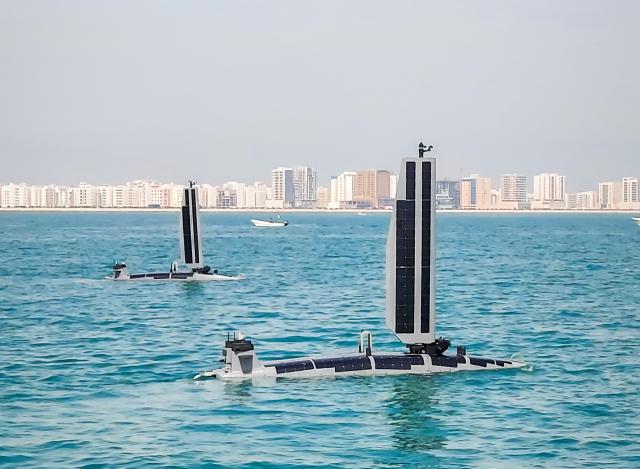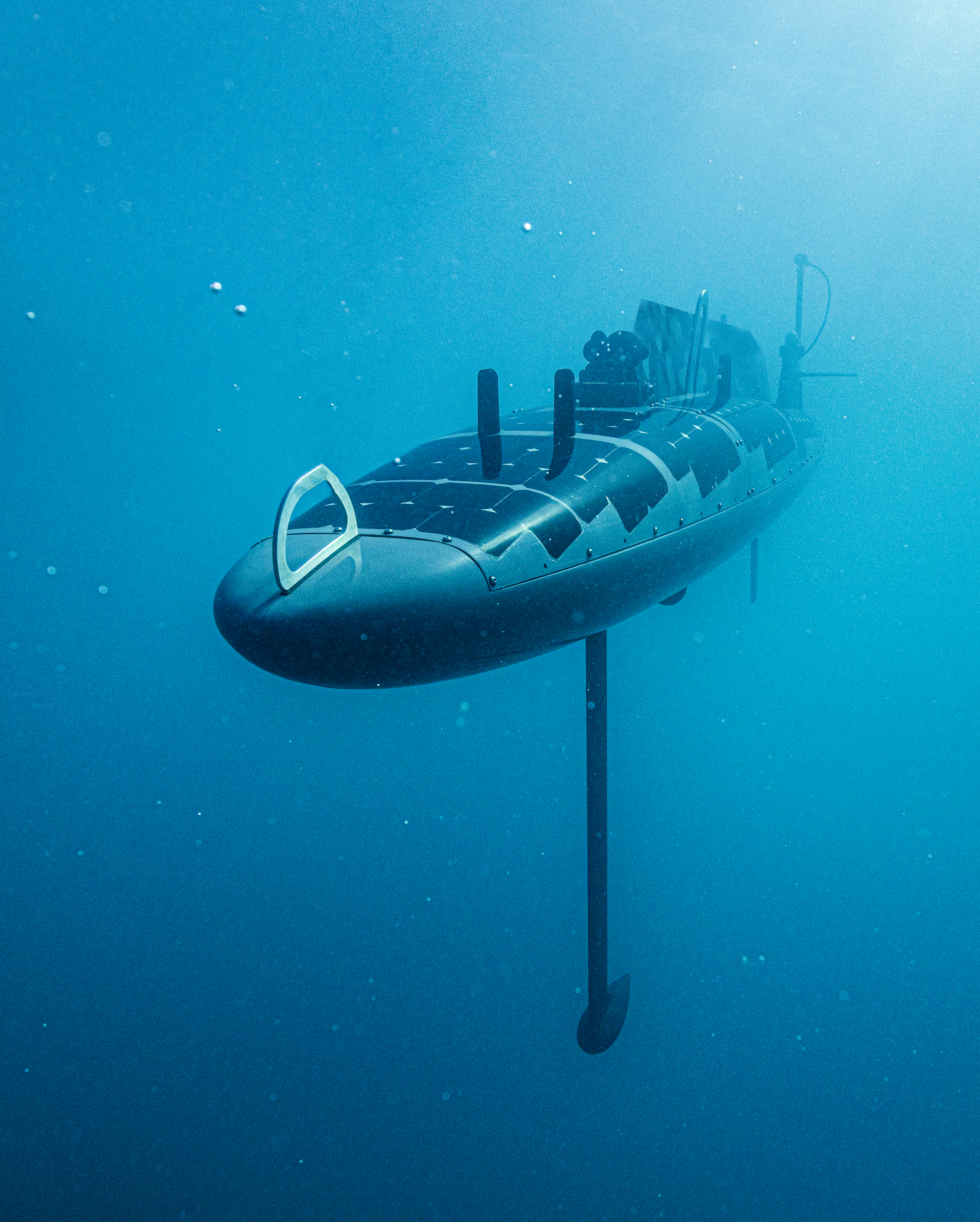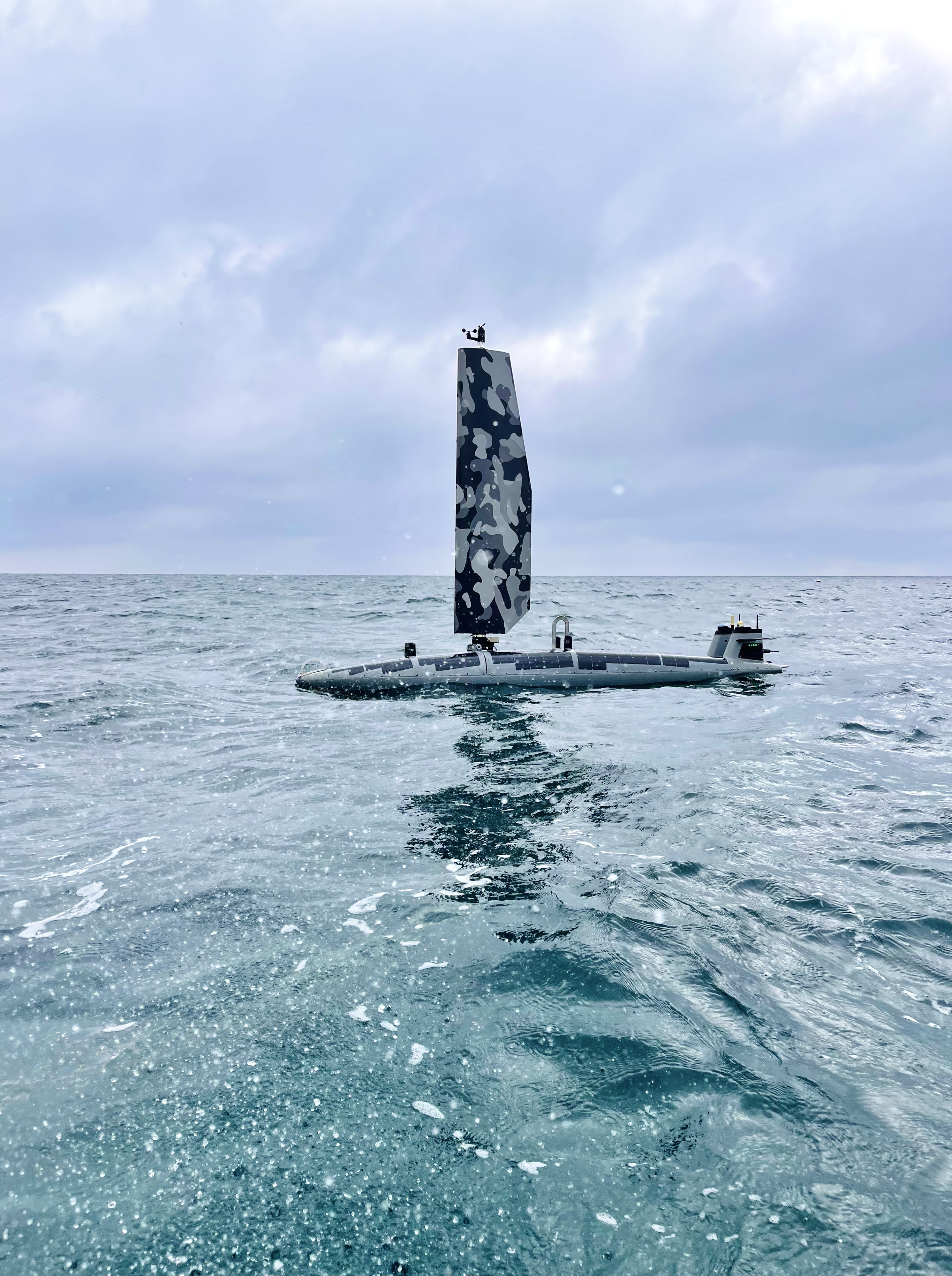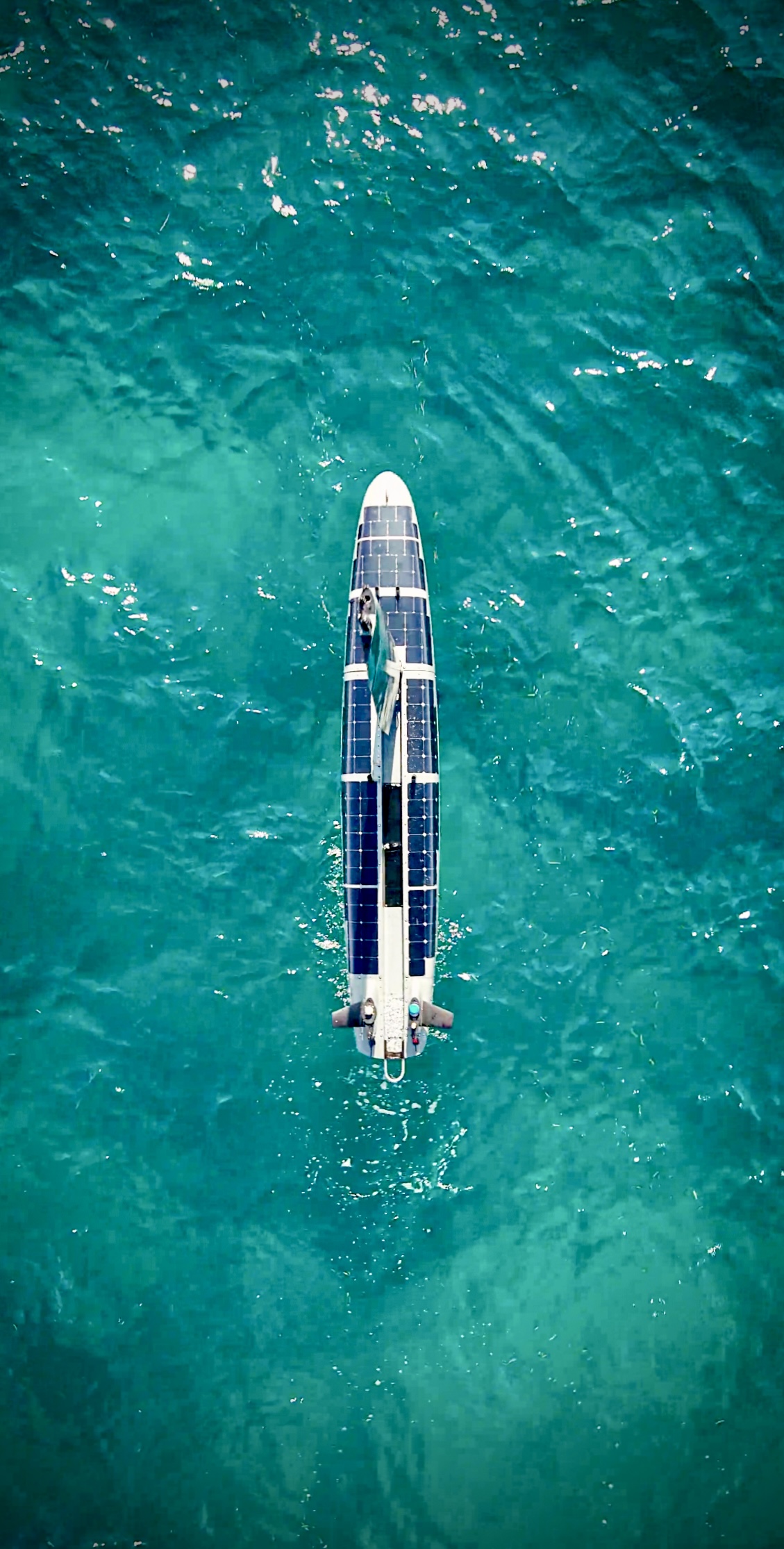
Two TRITON AUSVs sailing autonomously on a preprogrammed coastal mission. (Source: Ocean Aero)
A deepwater operator in the Gulf of Mexico (GoM) is testing a third-generation autonomous vehicle that can sail itself, dive for days at a time and inspect offshore facilities after violent offshore weather.
The hurricanes that hammer offshore platforms can halt hydrocarbon production in the GoM and batter an operator’s bottom line in the process.

Facilities in the path of a fierce storm cannot go back online until infrastructure is inspected. Ocean Aero is developing an autonomous surface and underwater vehicle that can ride out the storm on site and perform inspections, potentially returning undamaged shut-in platforms back to productivity.
Keith Blystone, Ocean Aero chief of staff, said a GoM operator is testing the inspection capabilities of the TRITON autonomous underwater and surface vehicle (AUSV) ahead of hurricane season.
The idea, he said, is to send the TRITON to the location where a destructive storm is expected to pass.
“When the storm arrives, you can have the ability to submerge the TRITON, so it dives underwater and effectively rides out the storm,” he said. “You only have to go 20, 30 meters below the surface of the water to effectively ride out the storm.”
After weathering the storm, the TRITON can get to work.
“It can take visual inspections of the platform and ensure the safety and reliability to hopefully get the platforms up and running and get people back to work faster than they otherwise would today,” Blystone said.
While the TRITON has not yet operated in a storm environment, Ocean Aero is working with the operator to prove the concept.

While post-hurricane inspection is one of the main undertakings Ocean Aero sees for the TRITON in the GoM, Blystone said the AUSV can handle other tasks as well.
The first of those, he said, is leak detection and validation, and the company is working with an operator to validate this capability.
The TRITON can autonomously swim to an area where there may be a possibility of a seep or a leak, which could initially be identified through satellite imagery, he said.
The vehicle can collect a sample of water and use a camera to image sheens on the water. Additional sensors can be added to the TRITON to collect different data.
Ocean Aero is also working with an operator on a communications gateway project. The TRITON autonomously gathers sensor readings and can communicate them via a radio network to offshore platforms.
“It just speeds up both the data collection as well as the data offload,” Blystone said. “Faster data in people's hands, faster decision making is the notion there.”
Ocean Aero also sees opportunity in pipeline inspection, which would have the TRITON equipped with sensors for side scan sonar before sending it to swim alongside a pipeline route to inspect its integrity, he said.
Data collection
Blystone said the AUSV has a versatile payload capability, allowing different sensors to be used to gather data independently. As such, he said, it is safer and less expensive than manned vessels that perform data collection.

“You're able to send autonomous vehicles into sometimes challenging environments where maybe you wouldn't want to send humans, just from a safety standpoint,” he said. “It allows you to have a broader presence out of the water, which allows it to collect more data.”
He said that the goal of the AUSV is not to replace human interaction, but to augment it.
The TRITON is 14 ft long and a little less than 800 lb dry. Two or three people can launch it from a shoreside ramp or crane. It can also be launched from a larger boat.
The boat autonomously deploys and runs for about three months on wind and solar power at speeds of up to 5 knots.
During storms, the TRITON can submerge for up to five days.
“When you want it to dive, the wing sail retracts into the hull of the boat itself, takes that shape of a submarine and can dive up to a hundred meters deep,” he said. “There’s a lot of versatility as to where and how you can plug stuff in.”
Ocean Aero recently celebrated its 10th anniversary, and the TRITON has been commercially active for a couple of years. Blystone said a lot of R&D has gone into creating and refining the dual-modality surface and subsea vessel, which initially had been used mostly in the defense industry. (Ocean Aero notes that the TRITON has a low radar and visual signature with a radar cross section that disappears outside of a quarter of a mile.)
Autonomous deep dive submergence allows the TRITON to avoid detection and evade threats.
The TRITON AUSVs on trial with the GoM oil and gas operator are third-generation models.

“Anything that becomes a submarine has to deal with stuff like marinization of all the aspects of the boat. So being able to take direct contact with the water — being able to withstand pressure — our boat can go up to a hundred meters deep,” he said. This means the AUSV needs “components that can both withstand water and pressure.”
He said the company was born out of the need to have an autonomous system capable of operating both on and below the surface.
“If you’re surface only, that's fantastic until you run into what we call ‘surface energy.’ Surface energy could come by way of a storm, a giant hurricane, in which case then you're in challenging environments to be able to ride that out,” he said. “If you do, chances are the asset’s not going to be in great shape once the storm passes through.”
Conversely, underwater-only units have their own constraints, Blystone noted.
“The challenge with underwater-only platforms is either they have to be tethered to a larger vessel to run on power, or their batteries only last so long and so they have shorter duration or utilization opportunities,” he said.
The TRITON, he said, can operate subsea for 8 days before requiring a charge. To charge, it surfaces to allow solar panels to soak up the sun and charge the AUSV. A full charge takes 24 hours. The TRITON, which does not have a diesel generator, can charge at 50 watt per hour at a depth of 2 m below the ocean’s surface and up to 470 watt per hour on the surface.
“It operates effectively on wind power as well as solar power,” he said.
Recommended Reading
To Dawson: EOG, SM Energy, More Aim to Push Midland Heat Map North
2024-02-22 - SM Energy joined Birch Operations, EOG Resources and Callon Petroleum in applying the newest D&C intel to areas north of Midland and Martin counties.
TPH: Lower 48 to Shed Rigs Through 3Q Before Gas Plays Rebound
2024-03-13 - TPH&Co. analysis shows the Permian Basin will lose rigs near term, but as activity in gassy plays ticks up later this year, the Permian may be headed towards muted activity into 2025.
Chevron Hunts Upside for Oil Recovery, D&C Savings with Permian Pilots
2024-02-06 - New techniques and technologies being piloted by Chevron in the Permian Basin are improving drilling and completed cycle times. Executives at the California-based major hope to eventually improve overall resource recovery from its shale portfolio.
Proven Volumes at Aramco’s Jafurah Field Jump on New Booking Approach
2024-02-27 - Aramco’s addition of 15 Tcf of gas and 2 Bbbl of condensate brings Jafurah’s proven reserves up to 229 Tcf of gas and 75 Bbbl of condensate.
US Drillers Cut Oil, Gas Rigs for Fourth Week in a Row-Baker Hughes
2024-04-12 - The oil and gas rig count, an early indicator of future output, fell by three to 617 in the week to April 12, the lowest since November.





